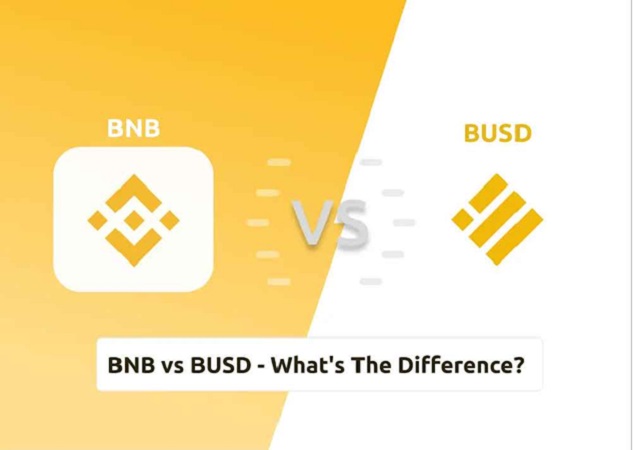
There are now two cryptocurrencies available on Binance: Binance Coin (BNB) and Binance USD (BUSD).
Given that each has unique qualities, it begs the issue of why both are seen as essential components of the Binance ecosystem.
What are the differences between BNB and BUSD, and can they be used interchangeably?
Despite the fact that Binance founded both, their goals are very different. In addition to facilitating transactions (including the conversion of BUSD to BNB) and providing trading fee incentives on the platform, BNB serves as the utility token for the Binance Exchange and Binance Smart Chain. The BUSD cryptocurrency, on the other hand, is categorized as a stablecoin with a value that is closely tied to the US dollar and is intended for usage in the cryptocurrency market.
The differences between these two cryptocurrencies are clarified by the thorough comparison that follows:
Use Cases
Binance Coin was initially only used to get rebates on trading commissions. Reducing fees by using BNB was a benefit that persisted at a 25% discount until 2022, after which it would gradually drop from 25% to 6.75% during the succeeding years. BNB’s utility was expanded with the launch of the Binance Smart Chain, which later served as the engine for the whole Binance ecosystem. Pancakeswap became as one of the most well-known initiatives thanks to its expansion, which enabled a number of other projects. BNB also acts as an authorization mechanism for transactions on the Binance Smart Chain.
The BUSD Stablecoin
BUSD, on the other hand, performs as a stablecoin since its value is inextricably linked to the US dollar. As a result, 1 BUSD seeks to precisely equal 1 USD. BUSD has a higher percentage of cash and cash equivalents, making up 96% of its reserves, compared to other stablecoins like USDT, which only have 2.9% of their reserves in cash. The redemption of 1 BUSD should theoretically result in the payment of 1 USD because the value of BUSD is directly supported by the US dollar. It’s crucial to remember that BUSD abides by strict rules and complies with the requirements of the New York State Department of Financial Services (NYDFS). BUSD has the ability to spark interest while being mostly utilized as a trading pair with other cryptocurrencies.
Corporate Support for BNB and BUSD
Binance Exchange introduced BNB as its utility token back in 2017. In contrast, Binance developed BUSD in partnership with Paxos, a financial services company based in New York. All of the US currency backing the BUSD reserves is pledged as security. It’s important to note that the establishment of BUSD came two years after that of BNB.
Stability of Value
BUSD experiences significantly fewer price volatility than BNB because it is a stablecoin. Due to Binance’s practice of buying and burning BNB tokens, which effectively reduces their supply and creates the possibility of price fluctuations, BNB’s value is more volatile. BNB is therefore the more uncertain token to possess. However, keeping BNB for a long time may result in appreciation for individuals who have faith in the Binance ecosystem.
Existing Trading Pairings
Trading any cryptocurrency on Changehero.io is feasible using either BNB or BUSD, making it possible to convert BTC to BNB or other cryptocurrencies. BNB and BUSD are widely accepted on the site for buying a wide range of cryptocurrencies because Binance developed both of them. The price of BNB’s trading pairs can be more volatile, which could affect how much Bitcoin one buys; in contrast, the price of BUSD’s trading pairings tends to be more stable.


Download the Daman Game now and step into an exciting world of entertainment and challenges! This game offers a seamless gaming experience with smooth controls, stunning graphics, and immersive gameplay that will keep you hooked for hours. Whether you’re a beginner or a pro, the Daman Game caters to all skill levels, providing endless fun and competitive matches.With its user-friendly interface, the game is easy to navigate, allowing players to jump into action